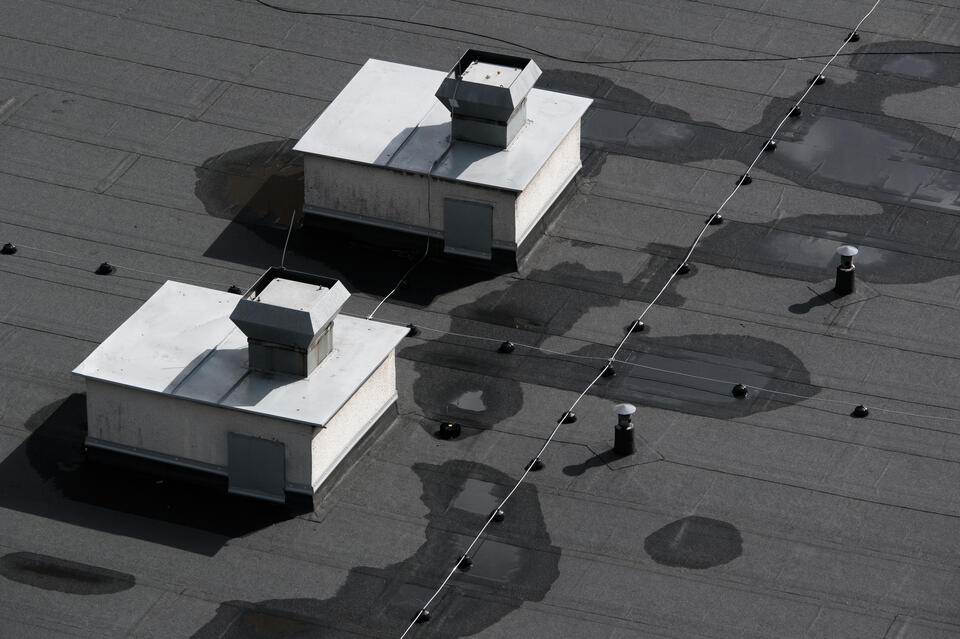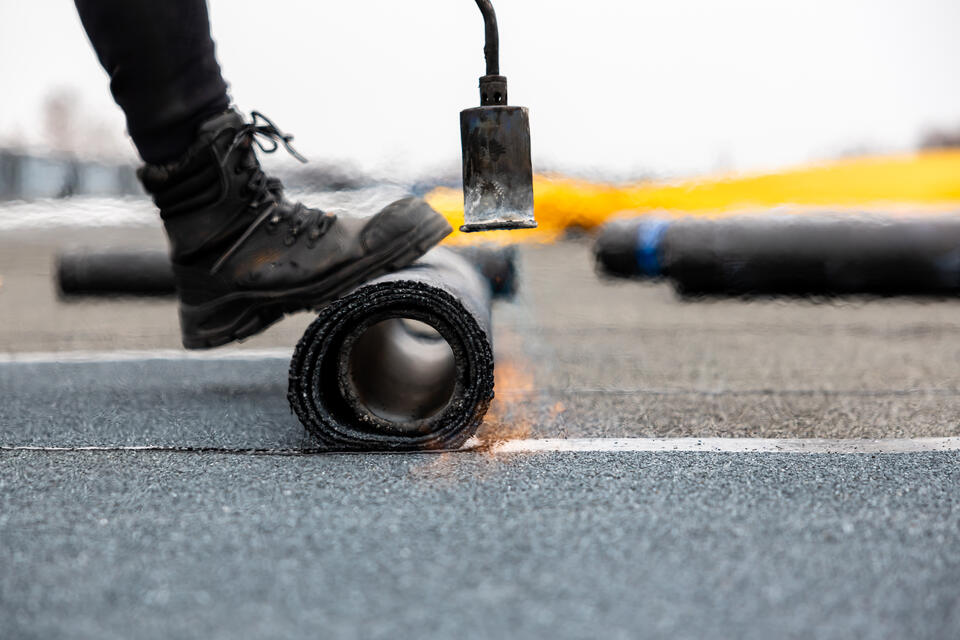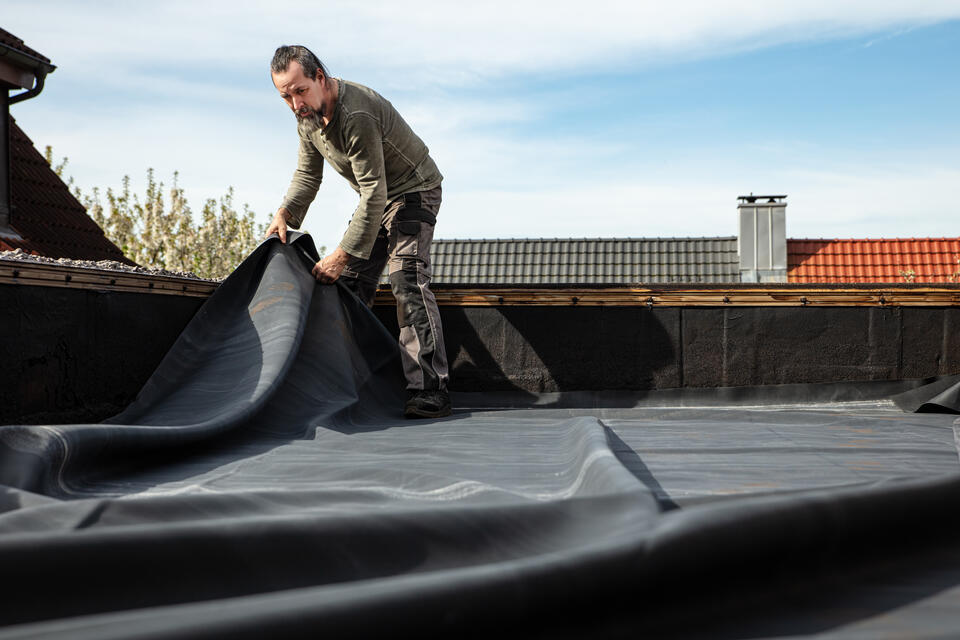How To Seal A Flat Roof: Step-By-Step Guide
Flat roofs are a popular choice for many modern buildings due to their sleek design and efficient use of space. However, they require proper maintenance to prevent leaks and other potential damage. One of the most effective ways to ensure longevity and durability is through proper sealing. In this step-by-step guide, we’ll walk you through the essential process of how to seal a flat roof, covering everything from the materials you’ll need to practical tips and safety precautions. Whether you’re a seasoned DIY enthusiast or a building owner looking to enhance your roof’s performance, this guide will provide all the insights necessary to keep your flat roof in top condition, including:
- Why you should seal your flat roof
- Materials needed to seal a flat roof
- 8 step instructions for sealing a flat roof
- When to call a professional roofer for flat roof sealing
🤔 Why You Should Seal Your Flat Roof

Sealing your flat roof is essential for extending its lifespan and maintaining the structural integrity of your building. A proper sealant acts as a barrier against the elements, protecting your roof from water infiltration that can cause extensive damage and expensive repairs. It also helps in preventing leaks, which can lead to mold growth and decay inside your building. Furthermore, a sealed roof improves energy efficiency by reducing heat loss, which can lower your heating and cooling costs throughout the year. Ultimately, regular maintenance and sealing of your flat roof is a wise investment for preserving your property’s value and ensuring peace of mind.
Materials Needed to Seal a Flat Roof
Before you begin sealing your flat roof, it’s important to gather all the necessary flat roofing materials to ensure a seamless and efficient process. Here’s a list of essential items you’ll need:
- Roof Sealant: Choose a high-quality sealant compatible with your roof material, such as rubber (EPDM), bitumen, or polyurethane.
- Primer: If required by your sealant, a primer helps the sealant adhere better to the roof surface.
- Roof Cleaning Solution: A cleaning solution, or mild detergent, to thoroughly clean the roof surface before application.
- Brushes and Rollers: Use these for spreading the primer and sealant evenly across the roof.
- Caulking Gun: Needed if you’re using sealant cartridges for detailed application areas.
- Protective Gear: Safety gloves, goggles, and a dust mask will keep you safe during cleaning and sealing.
- Ladder: A sturdy ladder is essential to safely access your roof.
- Paint Tray: Useful for holding the sealant while rolling it onto the roof surface.
By preparing all these materials beforehand, you’ll be ready for a smooth and effective roof sealing project.
🛠️ 8 Step Instructions for Sealing a Flat Roof

Sealing a flat roof is crucial to prevent water damage and a leaking roof, which can lead to costly repairs and structural issues. Proper sealing helps extend the lifespan of the roof by protecting it from harsh weather conditions and environmental wear.
1. Inspect the Roof
Before starting the sealing process, thoroughly inspect your flat roof for any signs of damage such as cracks, holes, or blistering. Walk across the roof carefully, looking for any weak spots or areas where the roofing material is peeling or lifting. Address these issues by repairing them first, as any existing damage can worsen over time and compromise the integrity of your sealing work. Patching up holes and smoothing out blisters ensures the sealant will adhere properly and provide effective protection.
2. Clean the Roof Surface
Using a roof cleaning solution, wash the entire roof surface to remove dirt, debris, and any old sealant. This step is crucial as a clean surface is essential for a uniform application that will stick properly. You can use a power washer or a brush to scrub the surface clean. Make sure to rinse well and allow the roof to dry completely before proceeding. Trapped moisture can prevent the sealant from bonding correctly and may lead to bubbling or peeling.
3. Apply Primer (if necessary)
If your chosen sealant requires a primer, apply it evenly across the roof surface using brushes or rollers. A primer acts as a preparatory coat that helps the sealant bond more effectively to the roof. This is especially important if the roofing material is porous or if the sealant instructions specifically recommend a primer. Let the primer dry according to the manufacturer’s instructions, which usually involves waiting for a set period or until it feels dry to the touch.
4. Prepare the Sealant
Open your sealant container and pour it into a paint tray if necessary for easier access. Follow any preparation instructions on the sealant packaging, such as stirring thoroughly to ensure even consistency or diluting with a specific solvent if recommended. Proper preparation ensures the sealant will spread evenly and perform as intended, providing optimal coverage and protection.
5. Apply the Sealant
Begin applying the sealant at one end of the roof using a roller or brush, working your way systematically across the surface. This approach helps ensure you do not miss any areas and allows for even distribution. Spread the sealant evenly to create a uniform layer that effectively seals the roof. Pay extra attention to seams, joints, and edges where leaks are most likely to occur. These areas are prone to water penetration and need thorough coverage to prevent future issues.
6. Seal Detailed Areas
Use a caulking gun for precise application in corners, around vent pipes, and other detailed areas where the roller may not reach effectively. These spots often have intricate or small spaces that require a more precise touch. Ensuring these areas are well-sealed is crucial to prevent water penetration, which can lead to damage over time. Take care to apply sealant smoothly and avoid over-application, which can cause buildup and uneven drying.
7. Allow to Dry
Once the sealant is applied, allow the entire roof to dry according to the time recommended on the sealant packaging. This drying period is critical to the effectiveness of the sealant, so avoid walking on the roof or adding weight that could disrupt the sealant layer. Premature disturbance can create weak spots that may lead to leaks or other issues down the line.
8. Final Inspection
After the sealant has dried completely, perform a final inspection of the roof to ensure full coverage. Look for any missed spots or areas where the sealant appears thin. Address these by applying additional sealant if necessary to achieve complete coverage. Ensuring a thorough seal helps protect the roof from weather-related damage and extends its lifespan. Conducting this inspection also allows you to confirm the quality of your work and make any final adjustments.
👨🔧 When to Call a Professional Roofer for Flat Roof Sealing

While DIY roof sealing can be a cost-effective approach, there are situations where seeking the expertise of a professional roofer is advisable. If your flat roof has extensive damage such as large cracks, significant blistering, or numerous weak spots, a professional can provide an accurate assessment and repairs that ensure long-term performance. Additionally, if you experience persistent leaks that reappear despite sealing attempts, a roofer’s specialized techniques and equipment may be necessary to address underlying issues. It’s also wise to call in a professional if your roof is difficult to access or if you’re uncomfortable working at heights, prioritizing safety above all else. Lastly, consider professional help if your roof is nearing the end of its expected lifespan, as a seasoned roofer can advise on whether it’s time for a comprehensive renovation or replacement instead of simply resealing.
🙌 Protect Your Building with Expert Flat Roof Sealing and Maintenance by Shamrock Roofing
Sealing a flat roof is an essential maintenance task that can protect your building from water damage and extend the life of your roof. Following the steps outlined ensures adequate protection and peace of mind, knowing your building is safeguarded against the elements. At Shamrock Roofing, we pride ourselves on delivering exceptional roofing services tailored to your specific needs. Our team of experienced professionals approaches each project with meticulous attention to detail and a commitment to quality, ensuring your roofing solution is robust and durable. Trust us to handle your building improvement needs with precision and expertise. Don’t wait for minor issues to evolve into costly repairs; contact Shamrock Roofing today for a consultation and let us protect your building with top-of-the-line roofing solutions.
